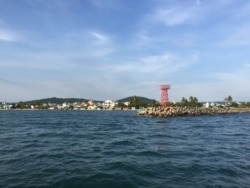Near the southern Vietnam beaches filled with kite surfers and mud baths, there sits a hydropower plant called Da Mi. It is no longer just generating power from dams and falling water, however. Crews added solar panels to the reservoir last year, creating what the Asian Development Bank called the first large floating solar project in Southeast Asia.
With the project and others like it, sunny Vietnam has the region’s largest installed capacity of solar power. Its ambitions to move to solar and away from coal was stymied by one issue for years, though. After companies installed panels to suck up power from the sun, they sold the energy to the state utility, without a way to push it directly to customers like other companies. That is about to change.
Hanoi has enacted legislation to allow these direct sales by removing the state monopoly, Vietnam Electricity, as the middleman. Supporters hope the rules will expand the market for renewable energy, particularly as Vietnam considers itself among the five nations most at threat from climate change. However it still has a love-hate relationship to coal, which is cheap but is also a major source of greenhouse gases that make the air unhealthy.
“Vietnam Electricity (‘EVN’), and its authorized member companies, no longer the sole purchaser of electricity from solar power projects in Vietnam, as the definition of ‘electricity purchasers’ includes private organizations and individuals,” DFDL, a law firm, said in a note to clients explaining the significance of the new legislation, Prime Ministerial Decision No. 13.
Biggest solar farm
Vietnam says it has the biggest solar farm in Southeast Asia, though neighbors are catching up. Nearby Indonesia included solar incentives in its COVID-19 recovery plan, while Myanmar called for bids to build solar power projects. Malaysia and Thailand had the largest solar capacity in the region until being overtaken by Vietnam by 2019, according to Wood Mackenzie, a consulting firm.
Next door China spent years ramping up solar panel production, making them more affordable to the world. However President Donald Trump’s trade war with China included tariffs on panels, pushing companies to buy from Vietnam instead. Now, the World Bank said in a press release, “Vietnam has also become a world leader in solar module manufacturing.”
Many of the panels weren’t being used in Vietnam itself, though, as the nation debated whether and how much to wean itself off cheap coal. The communist government is trying to strike a balance. On one hand, it aims to keep electricity stable and affordable for citizens. During the COVID-19 lockdown, for instance, authorities cut power prices to ease the burden on consumers who were working less. On the other hand, Vietnam worries climate change threatens its coasts, farms, lives and livelihood.
“Climate change is imposing great challenges on us,” said Phung Quoc Hien, vice chair of the National Assembly, last month. “We've gone through the worst crisis with saline intrusion and drought.”
US interest
While Trump dismisses the threat of climate change, his State Department promotes a climate-friendly agenda. For instance the U.S. embassy in Hanoi lobbied for policies to support renewable energy, including Vietnam’s legislation to allow companies to sell solar power directly to consumers.
Beyond the direct purchases, Vietnam is weighing other ways to meet electricity demand, which has increased 12% a year, according to the Asian Development Bank. For instance it is considering moving away from setting feed-in tariff (FIT) prices for power and letting investors place bids instead.
“In particular, the World Bank’s support to the government’s effort in shifting from FIT to a competitive bidding mechanism for solar PV [photovoltaics] could be applied for other types of renewable energy in the future,” said Hoang Tien Dung, general director of the Electricity and Renewable Energy Authority of the Ministry of Industry and Trade, in a press release earlier this year. “It contributes to the sustainable and transparent development of renewable energy in Vietnam by harmonizing the interests of private investors, the government and customers.”







